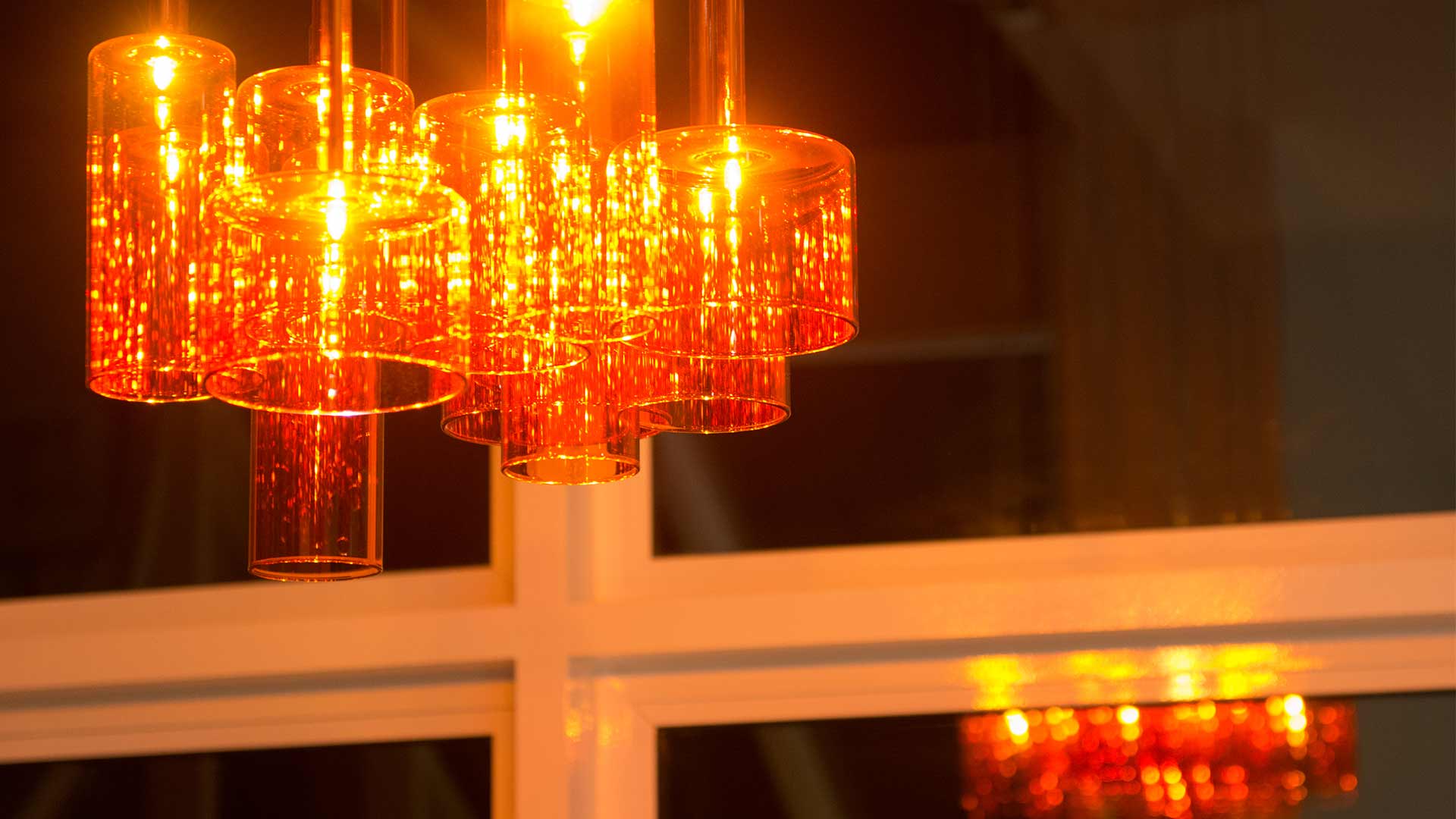Decorative Details
For the last few years decorative luminaires widely used in residential lighting design have been stuck between a rock and a hard place. Traditional light sources whether we like it or not are being phased out, but alternatives have been less than satisfactory.
Luminaire manufacturers have continued to blindly produce decorative fittings that are designed to take incandescent light sources. Not just in terms of lamp caps but also in terms of the light distribution, size and visual aesthetic of the lamp itself.
Meanwhile lamp manufacturers have been focused on new technology, the race to produce the highest light outputs and the best colour rendering – all targeted towards the more commercial sectors. Very little time’s been put into looking at how new technology can work with a standard household luminaire.
I’ve visited many houses where you can see a CFL sticking out the top of the owner’s standard table lamp, with the shade balanced precariously on top. Or the LED lamp carefully shaped to look like our favorite incandescent lamp, but only the top half giving out any light leaving the bottom half of the luminaire unlit.
As a lighting designer I’ve found myself having to source and specify different lamps for each individual decorative fitting on a project; to ensure that they sat within the fitting correctly, that the light distribution was precise and that if the lamp could be seen, it looked okay. There have been attempts to address this with some manufacturers squashing CFL lamps into giant incandescent lamp shapes and others deciding to look forward and giving them their own individual “iconic” look, like the plumen lamp LEDs.
However, it seems we’re finally starting to see more mature, more joined up solutions. Flos’s iconic Arco luminaire is now available in LED and not just with any old replacement lamp chucked in, it uses an LED module specifically selected so that it replicates the same light distribution as the original design.
Santa & Cole has taken the LED and designed ceramic shades that “diffuse the light with the elegance of a candle”, to create the Cirio hanging lamp. They’ve also won awards for the BlancoWhite, which has “opened new horizons in the domestication of LEDs and takes better advantage of its great benefits”. The design uses slim LEDs incorporated into a series of four models, usable as tabletop bookcases, luminous shelves, or lighting composition systems. This integrated solution harks towards what the future of lighting may hold if OLEDs become a viable light source.
Retrofit lamps are also being developed to fit the domestic market requirements. A number of lamp manufacturers have recently released LED candle lamps, some more successfully than others, that are not just the right shape but also produce the twinkling light point that’s key to the aesthetic. These still have a larger lamp base that need to be hidden, but some luminaire manufacturers of more traditional candelabras are finally reacting to this by re-designing the cups to take them. And finally, there are a number of bayonet LED replacements, which means that all of us Brits can use them too…


